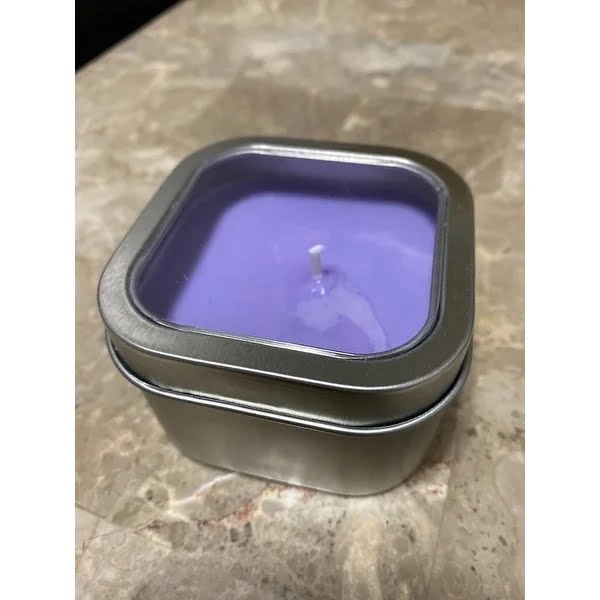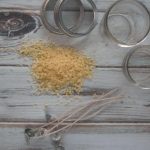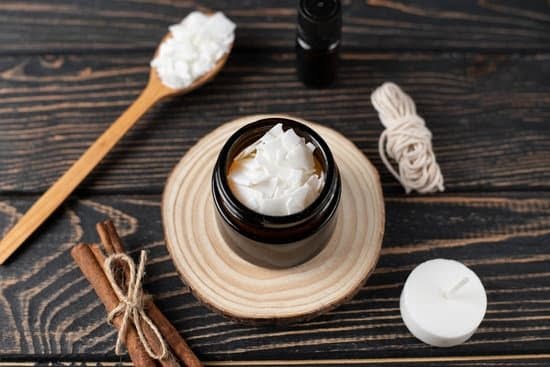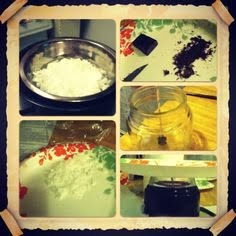Introduction
Natural scents for candle making are becoming increasingly popular among those who make their own candles as a hobby or to sell. Natural scents offer a variety of benefits that cannot be replicated by artificial scent oils, and with an increased focus on environmental impact there has been a recent surge in demand for natural options when it comes to filling the home with aroma. Although people often worry about the cost of using natural ingredients when it comes to candle making, using essential oils can actually be less expensive than purchasing artificial products. In addition to being more affordable, natural options often last longer and can provide more intense aromas without the use of synthetic chemicals.
However, there are some common misconceptions about using natural scents in candle making that can dissuade people from pursuing this option. Many people mistakenly believe that essential oil candles must only utilize one single scent in order to maintain the holistic properties of this type of ingredient; however, it is possible to create custom combinations by layering small quantities of multiple essential oils in order to achieve a desired smell profile. Some also harbor concern over potential safety issues related to burning essential oil based products; while burning certain ingredients, such as citrus peel oil, could cause irritation when inhaled too much smoke should be avoided regardless of what kind of scenting agent is used due to the potential health risks associated with long-exposure inhalation.
Generally speaking, natural scents provide an eco-friendly way to create delightful aromas in any room while avoiding potentially dangerous synthetic chemicals that are usually found in artificial products; plus the immense range of essential oils available allows for custom combination and experimentation and provides aromatherapy benefits that many find priceless seeing how simple smells have been linked to improved physical health and emotional stability.
The Types of Natural Scents Available
Creating natural scents for candle making can benefit your home, as these fragrances can add a layer of warmth and comfort to enhance the overall atmosphere. Natural scents are taken from plants and pods, extracted using steam distillation, solvent extraction, maceration, carbon dioxide extraction, expression or enfleurage. The natural ingredients will naturally provide an abundance of aromas that you may use in the creation of your candles.
Essential oils are more concentrated than fragrance oils and offer a more potent scent when heated. Bloomhut essential oil choices include lavender, bergamot, cedarwood, lemongrass and eucalyptus ” just to name a few! Each type of essential oil has its own unique aroma profile as well as associated therapeutic effects; for example lavender has well-known calming qualities while eucalyptus stimulates the senses and is great for clearing out stuffy noses!
Synthetic Fragrance oils are designed to mimic the smell of a particular object or element in nature such as flowers or fruits; however what sets these apart from pure essential oil is their ability to create an array of unexpected combinations or provide scent elements that could not be mimicked through natural sources. Common specimen among Bloomhut’s synthetic fragrance selection include ‘Romance Night’ (a combination evoking sea spray and jasmine blossom), ‘Vanilla Dream’ (lovers of all things sweet will appreciate this decadent blend) and ‘Tropical Breeze’ (invigorates with its exotic compilation).
Bloomhut also offers extensive amounts of plant-based waxes such as soy wax which allows any combination of natural scents along with synthetic fragrances to be used without added chemicals making them not only environmentally friendly but also cruelty free. The properties found in highly absorbent soy wax help ensure that your candles burn for longer periods at a cooler temperature releasing enough scent molecules into the air so that people nearby may enjoy it too.
Choosing Essential Oils
When it comes to both creating and purchasing natural scented candles, essential oils are one of the most popular choices. However, with so many different aromas to choose from, it can be difficult to decide which scent or combination of scents will be best for your candle. A few tips and considerations for selecting quality essential oils for candle making include:
Personal Preferences: Before beginning the process of creating your own unique blend, take a moment to think about what type of scent you would like in your candles ” something light, spicy, floral or woodsy? Are there any specific scents that you tend to gravitate towards or avoid completely? Taking a few minutes to consider these questions can create clarity when faced with large arrays of bottles full of oils from which to pick.
Scent Combinations: Consider what other scents might pair well with your chosen base note. Citrus notes such as orange and lemon are oftentimes complemented by floral scents like lavender or ylang-ylang; fir, pine and juniper typically blend beautifully when mixed with earthy, deep tones such as patchouli; and woodsy fragrances like cedar or sandalwood often mingle nicely with minty aromas. Experimenting with different blends can lead you towards some truly extraordinary results!
Fragrance Lastingness: Additionally important is how long-lasting each particular note will be once burned in the candle. Generally speaking, lighter notes evaporate more quickly than deeper ones and can disappear more rapidly once the flame is extinguished ” this is referred to as the fragrance ‘throw’. To increase lastingness and intensity in your finished product mix it up balancing heavier fragrances alongside lighter ones ” this way even if some notes dissipate more quickly than others overall fragrance strength should remain consistent throughout its burning period.
Achieving a Balanced Blend: Ultimately it is important that whatever blend of oil you decide upon does not become too overpowering nor overly faint ” balance is key when combining different fragrances for a successful result! Try testing out small amounts of potential combinations on strips of paper or try heating them on ceramic tiles before deciding on the final mix. Doing so will assist in establishing what proportion works best between all desired ingredients prior actually putting them into play within your own concoction!
Preparing Essential Oil Blends
Creating essential oil blends for candle making can be a great way to infuse your candles with scented oils that evoke an emotional response and leave your customers wanting more. Start by determining what type of scent or emotion you want to convey through your candle. This will allow you to come up with creative ways to bring out the best possible scent in each essential oil blend.
Once you’ve settled on a specific theme for your candlemaking, begin by analyzing which particular molecular components should be included in your blend based on the desired effect. Additionally, when combining any two or more scents together, ensure that their scents are complementary and add balance to each other in order to create a pleasing and memorable aroma. To successfully create a successful aroma profile, one should place emphasis on base notes such as Cedarwood or Sandalwood, as well as middle notes such as Lavender or Rosemary and finish off with the invigorating top notes of aromatherapy like Bergamot or Lemon. Additionally, concerning the levels of concentrations of oils used in each blend, it is important not to overload each blend over 2-3%. This ensures that the customer’s olfactory senses don’t become overwhelmed by a powerful scent leading them away from enjoying their full sensory experience. Furthermore, allowing different fragrances within each blend enough room allows them create depth of smell while also creating a new mix of aromas every time they burn.
Setting the Right Mood with Candle Scents
When you make your own natural scented candles, you’re in control of the environment and atmosphere you create. Certain essential oil blends can be used to achieve a different mood and provide aromatherapy benefits. For example, if you want to set a romantic vibe, a blend of lavender, lemon, and ylang-ylang may create a calming ambiance. On the other hand, ginger, grapefruit and eucalyptus can help to energize your space.
The same is true for relaxation. A mix of mandarin, geranium and chamomile can ease stress levels; whereas if you’re looking to inspire creativity or invigorate your space consider rosemary paired with peppermint or sweet orange. If it’s clarity that you seek another excellent blend might be cedar wood, lemon verbena and bergamot – providing clarity of thought combined with hints of refreshment suitable for any meditation corner or study.
Using natural candle scents you can go beyond simply selecting one smell; discover new combinations while bringing more aromatherapy benefits such as increased confidence, releasing anxieties and uplifting energy levels through pleasant scents! Rosemary has also been known to help improve memory retention when diffused as part of an essential oil blend which makes it an excellent choice for work or study environments where creativity is key. Finally jasmine can add an exotic aroma to any environment while serving to enhance moods naturally – bringing the best from both worlds!
Caring for Natural Scented Candles
Caring for natural scented candles is an important aspect of their upkeep and maintenance. When using natural scents, the intensity will fade over time, so it’s essential to follow certain guidelines to ensure proper care for your candle:
1. Keep your candle away from direct sunlight or heat source when not in use.
2. Before lighting, cut the wick approximately to 1/4-inch length. This allows a longer, smokier and more controlled burn time of your candle.
3. Trim the wick every 4 hours while burning, as this ensures a clean flame and prevents it from smoking or flickering. Be sure to keep the wick at approximately 1/4-inch length throughout its lifespan.
4. Avoid moving the candle while lit so that wax does not drip or splatter on any nearby surfaces; also avoid drafts which could cause uneven burning and reduce your burn time by half.
5. If discoloration occurs in your candle due to its wax containing all-natural ingredients, understand that this is perfectly normal and simply rotate the candle when necessary to bring out more color where needed without compromising smell or presence of smoke.
Conclusion
The use of natural scents for candle making is an enjoyable and creative project that provides an opportunity to express yourself in a meaningful way. Natural plant-based essential oils are beneficial not just to the skin and body but their aromas also have other profound therapeutic effects on our psyche and emotions. The blending of essential oils while crafting homemade candles goes beyond simply providing delightful smells; instead, it can be used as an activity with potentially restorative properties. To inspire your creative process, there are some excellent online resources which provide different recipes for candle fragrances, as well as a plethora of ideas related to candle creation. Additionally, talking with experienced candle makers, who may reside locally or be found online via forums and chatrooms, could prove invaluable in helping you come up with unique scent profiles which will evoke pleasant memories and special moments of joy. All in all, when embarking on your DIY adventure in creating personalized candles, remember that there are numerous options related to materials (waxes or containers) and natural plant-based extracts which make delightfully fragrant personal tokens for yourself or gifts for others.

Welcome to my candle making blog! In this blog, I will be sharing my tips and tricks for making candles. I will also be sharing some of my favorite recipes.





